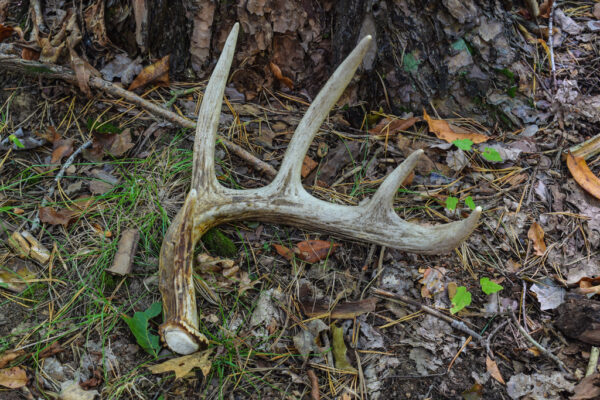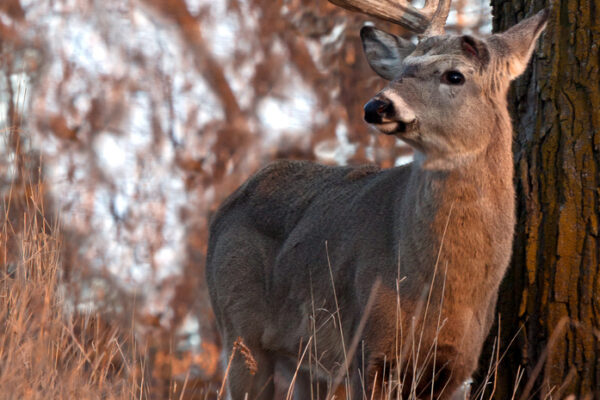By Horace Gore
All cervid animals—deer, elk, moose—shed their antlers after breeding season. Testosterone and estrogen are major components of antler shedding and antler regrowth, but poor nutrition can cause male cervids to drop their antlers early in winter. Generally, this is the annual routine:
Male cervids grow antlers each year from burrs (bases) on the top of the skull. A combination of estrogen, testosterone, and nutrition cause the antlers to grow. In late summer or early fall, testosterone prevails, causing the blood supply to the growing antlers to stop, and the velvet on the antlers dries up and begins to fall off. The animal rubs his antlers on objects such as straight trunks and branches of select trees and bushes. Regardless of the rubbing, the velvet will eventually fall off and the antlers will be hard bone, ready for the breeding season—fall and winter. Mature males use their antlers to build neck muscles for dominance during mating season.
The testosterone level in a male cervid is kept active by the heat cycles of female cervids. A male will retain a high level of testosterone as long as at least one female is in estrus. Where the buck-to-doe ratio is high, it is not uncommon to see several bucks chasing a late estrus doe in late January or early February. Quite often, these late estrus does are fawns that are old enough to come into estrus in late winter.
Testosterone levels drop as the percentage of females in estrus declines, and at some time between late December and early February, all females are bred. The male cervid has chemical reactions between testosterone and estrogen that cause the antlers to break away at the burr. Sometimes both antlers will drop in a short period of time, while a single antler may stay attached and fall off several days later.
As a rule, all white-tailed deer, mule deer, and elk in Texas will have dropped their antlers by mid-February, with mid-March at the very latest. New antler buds appear shortly after the old antlers fall off. Visible regrowth is often seen as early as mid-March or April each spring when the new antler cycle begins.




